hunter_46356
Hero Member
- Joined
- Feb 12, 2012
- Messages
- 502
- Reaction score
- 306
- Golden Thread
- 0
- Location
- Indiana/Florida
- Detector(s) used
- NOx 800, AT Pro
- Primary Interest:
- All Treasure Hunting
- #1
Thread Owner
Don’t know if anyone has tried this twist on a fluid bedsluice but I came up with the idea from having an under gravel filter years agofor a twenty gal. aquarium. The filter fit the entire aquarium bottom and hadsmall holes or slits in it that drew the water through the gravel in the tankto create a sort of bio filter. Now I know this isn’t the same due to the factin this case the water will be forced up from the bottom creating little spoutsabove each hole. My hope is having enough water volume and pressure it willfluidize the catch box and clear the lighter material. My experience in thepast with several home made fluid bed sluices I’ve made is I always seem tohave what I feel is to much classified material to pan out. If I haveenough flow I’m guessing this may work. Going to take it out Thur. and get itwet. I haven’t painted or sealed the wood cause I didn’t want to spend the timeand money if it doesn’t “pan out” LOL. I'm a cheap skate right now I have about $8 in it. Thanksgoes out to Goodguy and Astrobouncer for making my brain work overtime thinkingof a better (fluid bed) mouse trap. Let you know how it goes. Comments or Criticism Welcome.
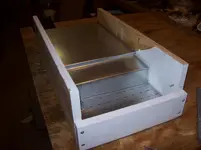
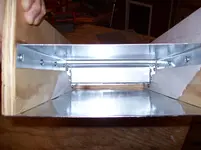
Bottom water section tapers from 3" inlet down to 1" under the bed
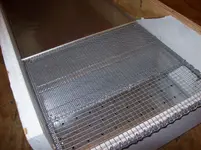
Combination 3/16" diamond screen and 1/4" hardware cloth classifier
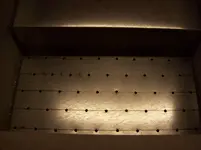
Bottom of catch box 3/16" holes 1" x 1" offset
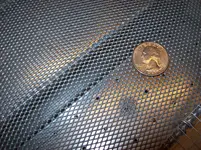
From the slick plate to the front edge of the lower box is a 3"x1/2" taper droping into the box under the first part of the classifier.


Bottom water section tapers from 3" inlet down to 1" under the bed

Combination 3/16" diamond screen and 1/4" hardware cloth classifier

Bottom of catch box 3/16" holes 1" x 1" offset

From the slick plate to the front edge of the lower box is a 3"x1/2" taper droping into the box under the first part of the classifier.




